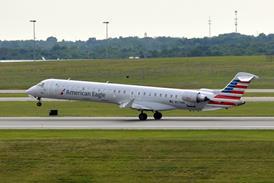Graham Warwick/NEW ORLEANS
Gulfstream Aerospace has submitted two proposals for research into a supersonic business jet to be funded under the US Defence Advanced Research Project Agency's (DARPA) Quiet Supersonic Platform (QSP) programme.
One Proposal is for the development of technology to reduce sonic booms, while the other is for studies of a long-range, low-boom aircraft which Gulfstream now calls the Quiet Supersonic Jet (QSJ). The first picture of Gulfstream's proposed QSJ was released last week at the National Business Aviation Association (NBAA) convention in New Orleans.
"We believe a solid business case exists [for a quiet supersonic business jet] and we are in the process of studying the technology," says president Bill Boisture. There are two issues, he says: the ability to fly supersonic overland with minimum boom, and the availability of propulsion technology with reasonable overhaul intervals and costs.
Boisture hopes DARPA's $38 million QSP programme will lead to a subscale flying demonstrator that would pave the way for the QSJ. He does not expect a supersonic business jet to enter service for another 10 to 15 years, and because of difficulties encountered certificating the Gulfstream V in Europe, Boisture adds, "we believe it will be built by an international consortium, of which Gulfstream plans to be a substantial part".
The starting point for the company's QSP proposal is work accomplished with former partner Lockheed Martin Skunk Works to reduce sonic boom through aircraft shaping. Boisture says Lockheed Martins's financial difficulties forced it to withdraw.
Other companies interested in developing a supersonic business jet are persuing QSP funding, and Reno Aeronautical announced at NBAA that it plans to test a subscale version of its Mach 1.6 Affordable Supersonic Executive Transport, which features a supersonic laminar flow wing.
Source: Flight International























